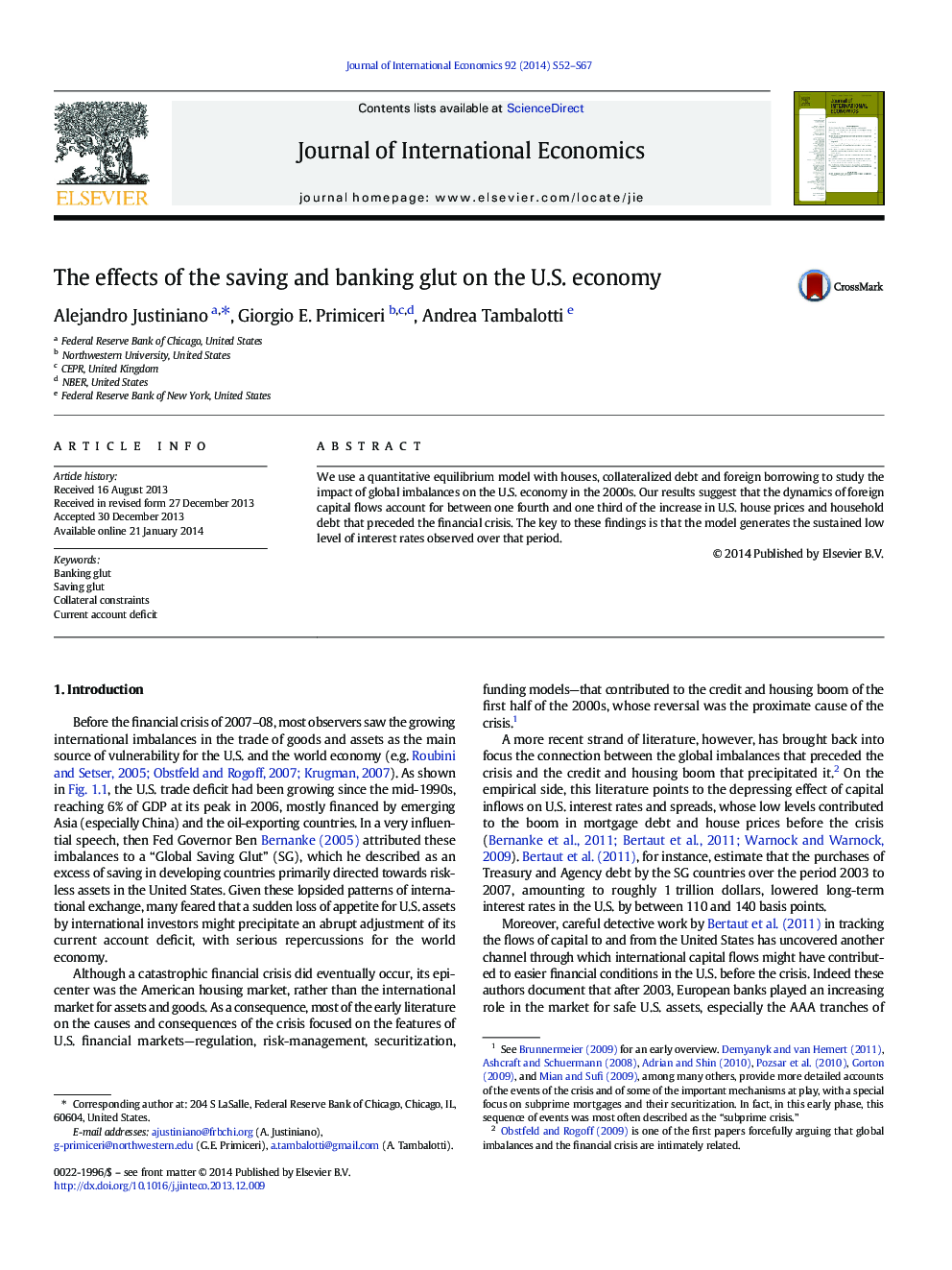| Article ID | Journal | Published Year | Pages | File Type |
|---|---|---|---|---|
| 963068 | Journal of International Economics | 2014 | 16 Pages |
Abstract
We use a quantitative equilibrium model with houses, collateralized debt and foreign borrowing to study the impact of global imbalances on the U.S. economy in the 2000s. Our results suggest that the dynamics of foreign capital flows account for between one fourth and one third of the increase in U.S. house prices and household debt that preceded the financial crisis. The key to these findings is that the model generates the sustained low level of interest rates observed over that period.
Related Topics
Social Sciences and Humanities
Economics, Econometrics and Finance
Economics and Econometrics
Authors
Alejandro Justiniano, Giorgio E. Primiceri, Andrea Tambalotti,
